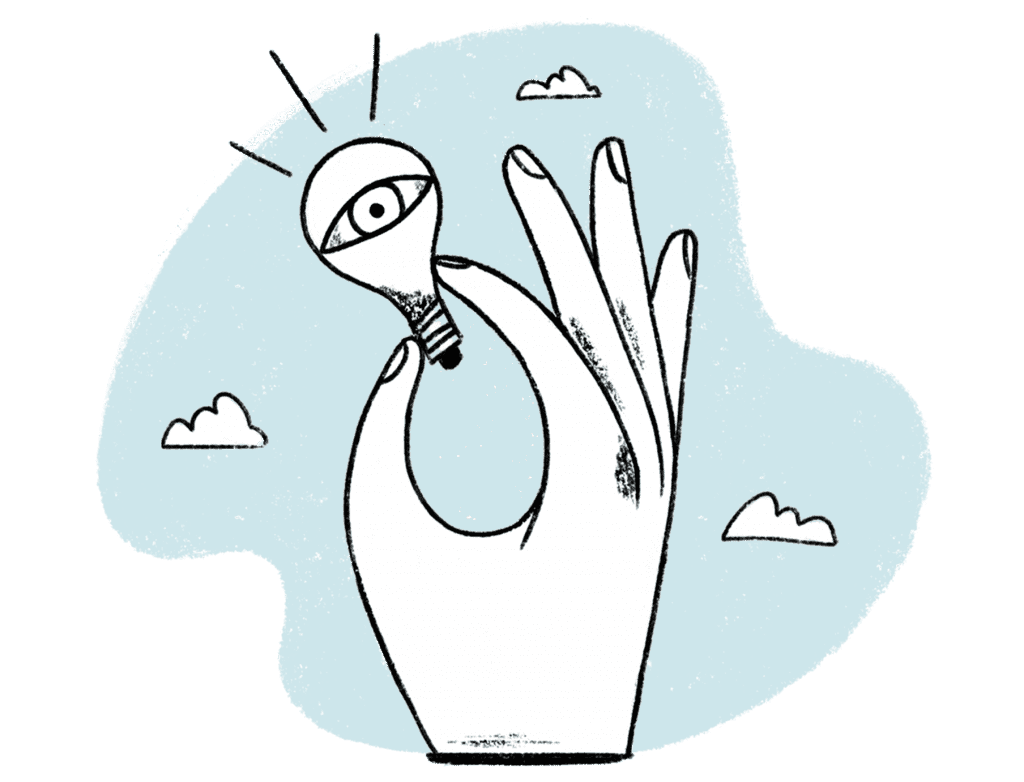
27 August 2025
4 min.
Autonomous learning
3 May 2022
5 min.

Thought you knew everything about learning? Think again. Let us deconstruct some of your deeply held beliefs! In this article, discover 4 commonly held myths about learning.
Perhaps you’ve heard people say they are “visual”, “auditory” or “kinesthetic” when it comes to learning a new skill? In fact, maybe you yourself think you fall into one of these categories?
This is what many studies have called learning styles. The hypothesis behind these studies is that we learn better if the educational content is adapted to the learner’s learning style.
A person with a visual style would learn best with pictures or by watching content. A person with an auditory style would integrate information better when listening to instruction. Finally, a person with a kinesthetic style would learn best in action, by doing things.
However, there is no real scientific evidence to support this correlation between learning style, teaching method, and the knowledge or skills acquired through this route. In fact, the methodology used by these studies and the results do not allow us to establish this causal link.
That being said, you can indeed have learning preferences that may be related to the lessons you have been exposed to in the past or the talents you have developed in your life. According to the experts, the educational content is what should guide the teaching method. Indeed, the type of medium should be adapted to what we want to learn. A simple example is sports. Reading about the best sports techniques will not be as effective as trying to reproduce the movements. Makes sense, doesn’t it?
One of the most common myths about learning is that repetition makes for better memory.
This may be true depending on the nature of what is being learned. However, repeating what you have learned like a parrot continuously over a short period of time does not mean that you will better integrate the new knowledge. Pure repetition does not necessarily guarantee retention. It is true, however, that to develop new skills, nothing beats practice. Learning a new skill is a bit like working a particular muscle: it is with practice (therefore, some form of repetition) that the muscle/skill develops and the action becomes more and more “natural”.
Finally, it has been shown that spacing out learning is necessary. The spacing between the different learning moments is one of the key ingredients that allow better retention of information and knowledge.
We often see it appear in psychology or other learning magazines. There would be 2 types of brain: the right brain and the left brain. The right brain would be in the domain of emotion, intuition, and creation while the left brain would be much more logical and rational.
Some explain the differences between men and women in this way. Artists are often associated with the right brain, for their more creative aspect, while engineers would rather lean to the left side.
The popular belief is that we all have one brain more dominant than the other, which would explain our ease to learn some things more than others.
Again, there is no scientific evidence to support this theory.
OK, this one is true… but you have to understand the nuances! It’s a proven fact that in order to learn, you do indeed have to experience a moment of destabilization. It is unavoidable. However, the comfort zone (also called the “zone of proximal development” in scientific lingo) has its limits.
You may already be familiar with the notion of the “danger zone”: this is when you get so far out of your comfort zone that you lose all your bearings, to the point where you are too disoriented to fully enjoy the learning experience. For example, if you want to run a marathon but have never run regularly in your life, you should start by running short distances to get your body used to it gradually!
Developing a new skill, such as kindness in a context of organizational change, is the same thing: if you try to do too much right from the start, to destabilize yourself too much, you risk finding yourself in situations that are… rather frustrating!
That’s why at Boostalab, we advocate the small steps approach. Taking a first action, no matter how small, can help you gain confidence and persevere.

Today, we’ve shared with you 4 of the most common learning myths. Of course, these are not the only ones. There are several others floating around. The risk in believing them is that they can come to disrupt and slow down learning. And of course, we don’t want that!
It’s not easy to sort out what’s true and what’s not. Besides, you probably have more to do than scouring scientific journals to verify the veracity of every principle you come across. That’s why we do it for you and why we bring together the best learning techniques in our solutions. Because yes, mastering soft skills development is an art!
👉 Get 3 training themes for the price of 2!
A winning investment for your teams.
🔥 Offre exclusive en ce moment : 3 thématiques de formation pour le prix de 2!
Un investissement gagnant pour vos équipes!